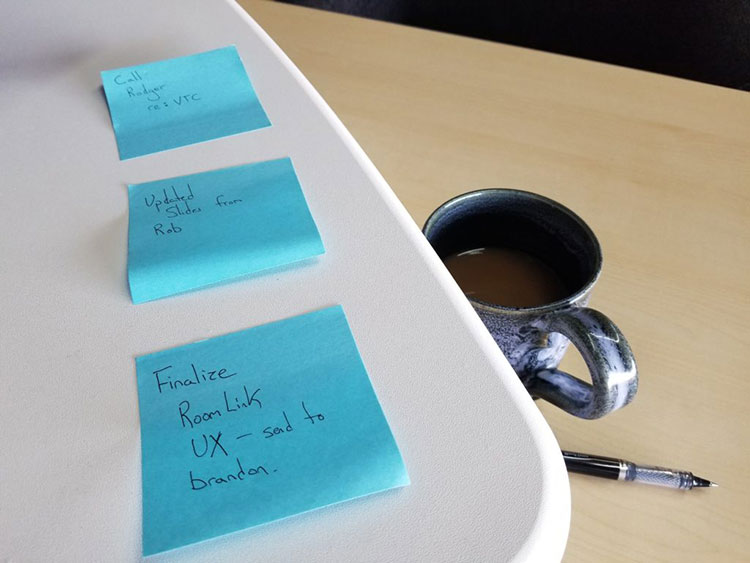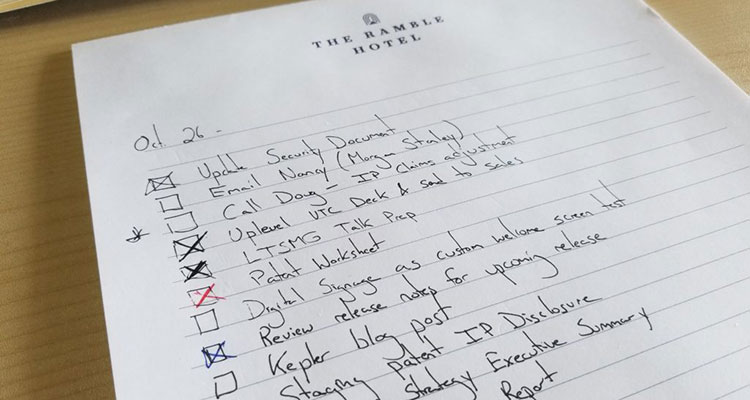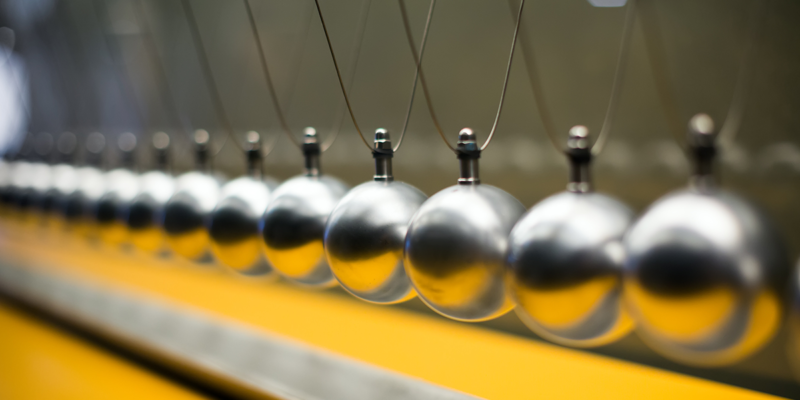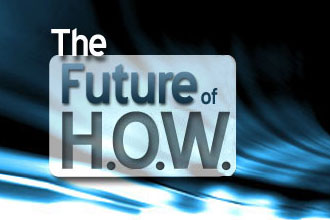De-stress at Work — The Three-Level To-Do List
 It’s national stress awareness month, so I thought I’d share one of the techniques I use at work to reduce stress for my readers. We’re a company that focuses on making your meetings something you can actually enjoy, and my own design team will talk about “de-stressing” opportunities in our own UI. However, there are plenty of platitudes about the stressful life of an entrepreneur and most are true — but everyone in the modern workplace, not just entrepreneurs, find stress creeping into their day. As a founder, I have to balance my amazing family, two-to-three weeks of travel a month, board meetings, growing a tech company while remaining innovative on the product front. About two years ago I discovered an approach to managing this stuff that probably had the most impact on reducing the stress of anything I’ve tried (though our new yoga-at-work Mondays are pretty awesome). It’ll probably surprise you: I make analog to-do lists.
It’s national stress awareness month, so I thought I’d share one of the techniques I use at work to reduce stress for my readers. We’re a company that focuses on making your meetings something you can actually enjoy, and my own design team will talk about “de-stressing” opportunities in our own UI. However, there are plenty of platitudes about the stressful life of an entrepreneur and most are true — but everyone in the modern workplace, not just entrepreneurs, find stress creeping into their day. As a founder, I have to balance my amazing family, two-to-three weeks of travel a month, board meetings, growing a tech company while remaining innovative on the product front. About two years ago I discovered an approach to managing this stuff that probably had the most impact on reducing the stress of anything I’ve tried (though our new yoga-at-work Mondays are pretty awesome). It’ll probably surprise you: I make analog to-do lists.
You see — I finally acknowledged that my stress emerges not from the creative chaos of product innovation or the fast pacing of the company — it’s the feeling that I may forget something. I’m lucky enough to work with some amazing people and companies and if I let something fall off the wagon — I let someone on my team down. The problem is that flat to-do lists simply don’t support what I need — they are great for groceries because they are typically focused on the near-term. What about those items that are farther out? Here is what works for me, and it’s old-school — pure analog.
I have three levels of to-do lists and each list speaks to a different type of task:
Level 1: Must Do Today
Level 2: The Middle Ground
Level 3: Strategic Initiatives
Of course, like anyone, I have plenty of digital scaffolding to keep me productive throughout the day. I use Evernote extensively (love the geotagging feature because I travel so much), and it’s always possible to search through email chains for missing to-do items. But going analog is a big stress reducer for me because I’m not adding items to the digital mix. This strategy is about pulling items into the analog world and making them real, giving them a life so that I can see them – and accomplish them.
Here’s how it works: Whenever something comes up, someone comes into my office and says “Can you…” or “Wouldn’t it be cool if we…” and the item is important enough to become a “To-Do” — I ask myself, which list does that go on? If it’s something immediate and it’s important enough, it’s added to the Level 1 list. If it’s something that’s important and shouldn’t get lost in the weekly shuffle, I assign it to the Level 2 list. Finally, if it’s a longer-term idea that I need to own and pursue, it’s placed on the Level 3 list.
For example, “Hey don’t forget to submit your topic for a speaking event today” lands on Level 1: Must Do Today while “What if we could use AI to discover what meetings may go wrong when they are scheduled and suggest solutions ahead of time.” Lands on Level 3: Strategic Initiatives.
Each list is managed differently, so you don’t get overwhelmed or pollute a simple task list with great ideas and vice versa.
Here’s how I keep it all straight.
Level 1: Must Do Today. When anything hits this list, I simply write it on a sticky note and attach it in my field of view to my desk. When the task on the sticky note is done, it gets tossed. The rule with this list – if it’s really going to help you de-stress — is that it MUST be empty (no stickies on the desk) before you go home. If that can’t happen, you should not have added the task and looked for other solutions (get someone else to do it). If you come into my office and see me grab hold of a sticky note, you can be sure that task will be done by the end of the day.

Level 2: The middle ground. This is probably the most important list — it catches things that, for me at least, cause the most stress. It’s a list that has important, please-don’t-forget items that don’t require immediate completion. It’s dedicated to items that may take some time or simply aren’t due for several weeks. This list, then, lives longer than a day but is semi-transient — things get added and checked off periodically. This list is probably the most similar to the traditional to-do list — it’s a checklist of items that only have two outcomes — checked off the list of scratched off the list. For this list, I use a tear-out notebook. The top page is the most recent to-do list, and when it’s either all checked or scratched off, I tear off the page and start a new list. This list is also always in view on my desk. It doesn’t come with me on the road (I don’t take new tasks when traveling), but it’s there every day as a gentle reminder that the list needs to get shorter, not longer over time. I’ve noticed that the refresh rate of this list, for me, tends to be about three weeks.

Level 3: Strategic Initiatives. This is where big ideas live. It’s a misnomer to call this a list. Instead, I carry an organizational notebook, along with my phone/laptop, to just about every meeting. If an idea or plan emerges in a meeting, a conversation or even the middle of the night (yes, my current notebook sits on my side table at night) — and I think it’s worth committing energy to — that idea is added to the book. You don’t need to pen-out a Gannt chart or detail out an initiative. There are plenty of digital tools to do that. The notebook is only to capture the idea/initiative as something worthy of follow-up.

In my system, I also make a special mark — two filled arrows — next to the page edge in that notebook. These marks allow me to flip through an entire notebook and find all initiative-level ideas/projects right away. It’s a mental accountability moment. I’ll often go back to previous year’s notebooks and see if we made progress on initiatives that, at least at the time, were important to make the Level 3 list — the Black Notebook.
I tend to use an unlined notebook for freedom of thought — meeting notes, mathematics, simple diagrams, etc. but recently I’m giving the Full Focus planner a try — maybe a review will be in order at some point.
Will this system work for you? I’m not sure. But what I do know is that finding a way to ensure tasks of different types don’t fall through the cracks of our hectic lives is a fantastic way to lower stress. Hopefully, this example will help you design a method that works for you!





